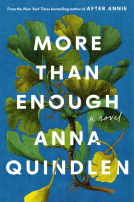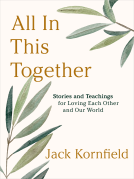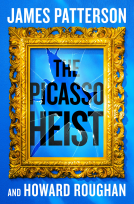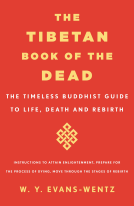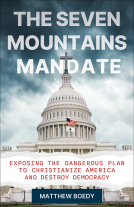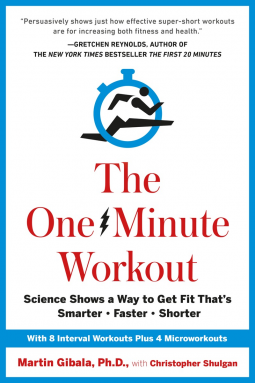
The One-Minute Workout
Science Shows a Way to Get Fit That's Smarter, Faster, Shorter
by Martin Gibala; Christopher Shulgan
This title was previously available on NetGalley and is now archived.
Send NetGalley books directly to your Kindle or Kindle app
1
To read on a Kindle or Kindle app, please add kindle@netgalley.com as an approved email address to receive files in your Amazon account. Click here for step-by-step instructions.
2
Also find your Kindle email address within your Amazon account, and enter it here.
Pub Date Feb 07 2017 | Archive Date Feb 08 2019
PENGUIN GROUP Avery | Avery
Description
A decade ago, Martin Gibala was a young researcher in the field of exercise physiology—with little time to exercise. That critical point in his career launched a passion for high-intensity interval training (HIIT), allowing him to stay in shape with just a few minutes of hard effort. It also prompted Gibala to conduct experiments that helped launch the exploding science of ultralow-volume exercise. Now that he’s the worldwide guru of the science of time-efficient workouts, Gibala’s first book answers the ultimate question: How low can you go?
Gibala’s fascinating quest for the answer makes exercise experts of us all. His work demonstrates that very short, intense bursts of exercise may be the most potent form of workout available. Gibala busts myths (“it’s only for really fit people”), explains astonishing science (“intensity trumps duration”), lays out time-saving life hacks (“exercise snacking”), and describes the fascinating health-promoting value of HIIT (for preventing and reversing disease). Gibala’s latest study found that sedentary people derived the fitness benefits of 150 minutes of traditional endurance training with an interval protocol that involved 80 percent less time and just three minutes of hard exercise per week.
Including the eight best basic interval workouts as well as four microworkouts customized for individual needs and preferences (you may not quite want to go all out every time), The One-Minute Workout solves the number-one reason we don’t exercise: lack of time. Because everyone has one minute.
Available Editions
| EDITION | Other Format |
| ISBN | 9780399183669 |
| PRICE | $33.00 (USD) |
| PAGES | 272 |
Average rating from 12 members
Featured Reviews
 Bassocantor ., Reviewer
Bassocantor ., Reviewer
American fitness guidelines call for 150 minutes of moderate- intensity exercise per week. Here's the problem: Only a small fraction of Americans actually do that.
In THE ONE-MINUTE WORKOUT, Martin Gibala has a good answer to this dilemma: You don't really need to spend 150 minutes exercising: "Among my biggest discoveries is a workout that provides the benefits of nearly an hour of steady aerobic exercise with just a single minute of hard exercising."
Okay, the "One Minute," part is a little misleading. The total exercise time is not just a minute--that's just the time doing the tough "sprint." The rest of the time is the recovery. So it would probably be more accurate to call it TEN minutes total. Nonetheless, ten minutes is still very fast.
For years, it was believed that aerobic improvement (i.e., for endurance) required aerobic-specific exercise. That's why many people spend a long time pedaling ellipticals, for instance. The author discovered that the long durations are not always needed. If you really push yourself in brief intervals, you can still get the same aerobic-type benefit: "As you repeat the basic pattern of sprint, rest, sprint, rest, a greater proportion of the energy comes from aerobic metabolism."
The key, however, is intensity. The professor makes it clear that the exercise is intense and hurts: "When You Exercise, Go Hard!" and "The harder and faster you go, the less time your exercise requires."
Dr. Gibala cites numerous other research to support his conclusions. One study done in 2011 in Taiwan, showed that 15 minutes per day of vigorous exercise had the same life-extending benefit as 60 minutes of moderate exercise. The author admits that earlier findings about interval training "did not take." One reason is that prior studies made a big mistake--the intensity of the intervals was too low.
In one early experiment, the professor set up an experiment which compared brief interval training to traditional exercise. The results were astonishing: "In approximately the time required to do the dishes, these young men and women had doubled their endurance capacity. . . It was the most remarkable result I’d ever experienced in my lab." The high intensity group achieved the same benefit with a lot less time, and using a lot less total energy. The control group of "normal" exercisers produced 2,250 kJ of energy in one week, compared to just 225 kJ in the "sprinters."
The latter part of the book is a banquet of all kinds of interval workouts--from the briefest (and most intense), to those just starting out. For example, Chapter Six is called "Fun and Fast: The Eight Best Basic Workouts." In all the workouts, the principle is the same--the more intense you go, the briefer the workout.
In addition to just these interval workouts, the author advises adding resistance training into your routine--especially for older readers. He notes that research on the benefit of resistance training is conclusive. So, figure out "a way to get comfortable incorporating some resistance training into your workouts. That’s because resistance training becomes increasingly important the older you get."
I was glad to see the author mention safety precautions many times. Thus, one should be especially careful about signing up for the maximum intensity: "Only when you’re comfortable with variations of submaximal interval protocols should you consider moving up to the expert workouts."
For people just beginning exercise, "If you’re out of shape, don’t try to be a hero. Mitigate the low risk that exists by starting with easy workouts and then working your way up to tougher ones. Don’t begin with all-out sprints. Instead, try an interval-walking program and move gradually to more intense workouts."
All in all, I found THE ONE-MINUTE WORKOUT to be an impressive, well-supported book.
The professor cites numerous studies and peer-reviewed research to support his conclusions. This is a well-written book that is easy to follow. I was not so much interested in the physiology of his experiments, but I suspect that others will appreciate that level of detail.
I especially liked the selection of workouts with varying degrees of intensity. A clarification on terminology: Keep in mind that when the author says, "sprint," he does not mean running. He means a maximum effort on whatever exercise you are doing. For most of his studies, the subjects used stationary cycles.
Dr. Gibala suggests his workouts really can benefit everyone--not just "gym rats." He concludes his book with this admonition: "Now get out there and get to it."
For runners interested in different types of training, I would recommend the classic by Pete Magill, "Build Your Running Body."
Advance Review Copy courtesy of the publisher.

